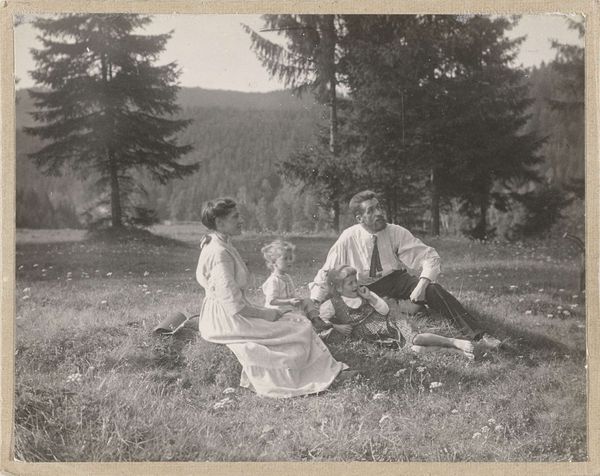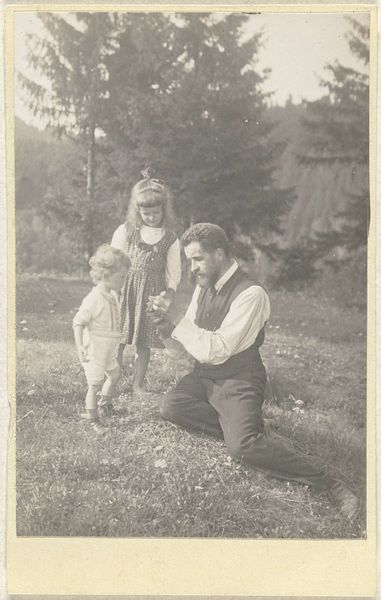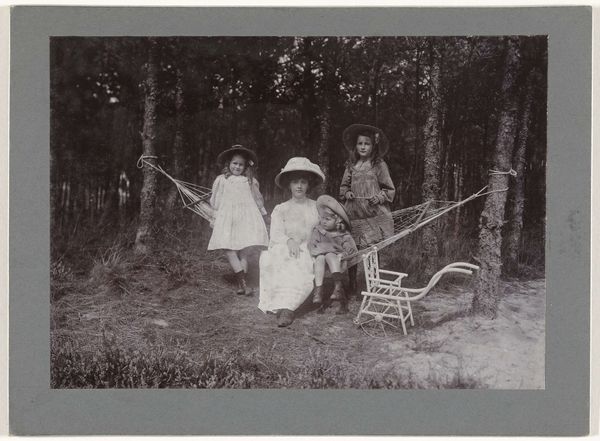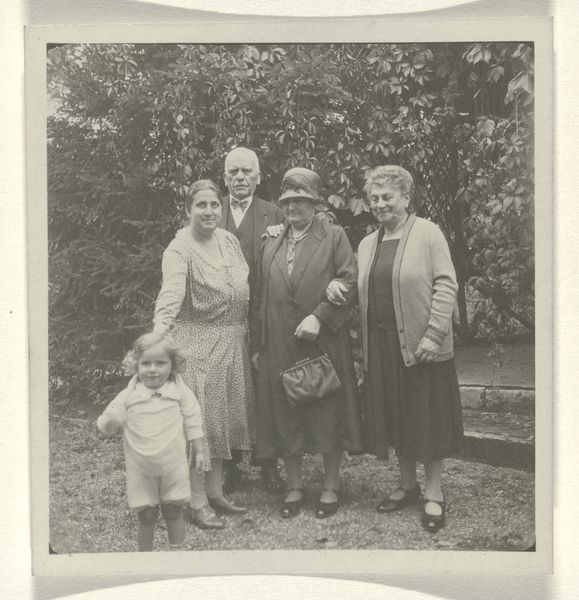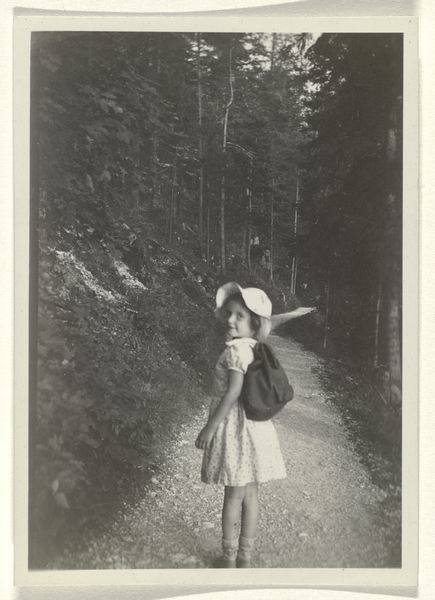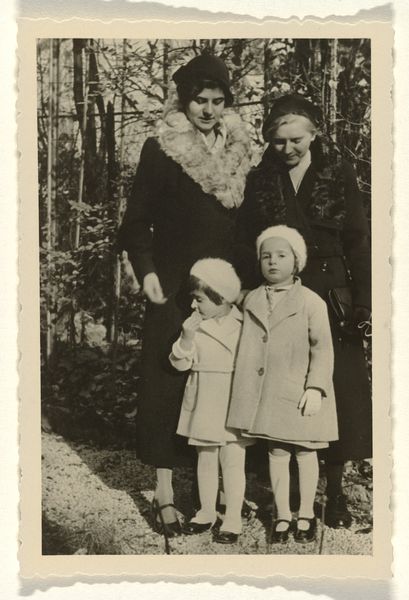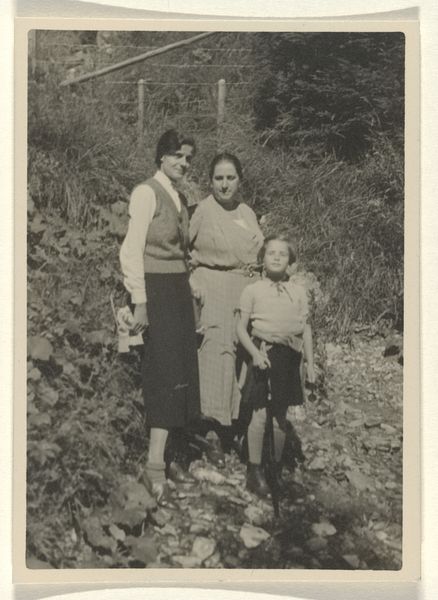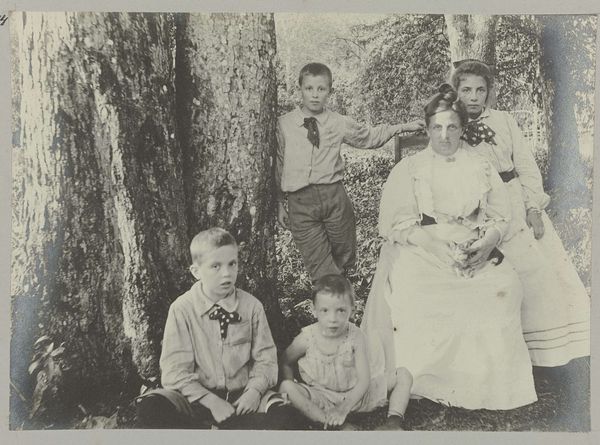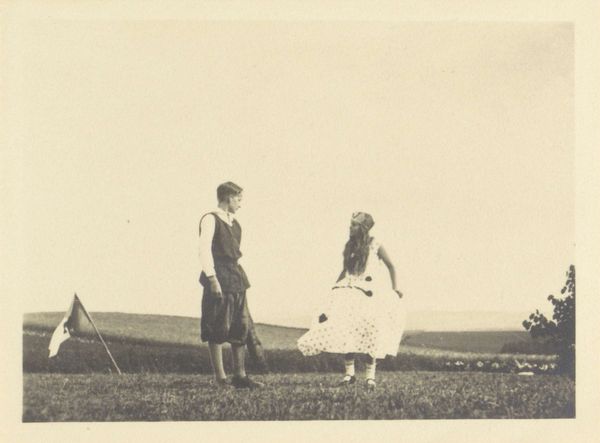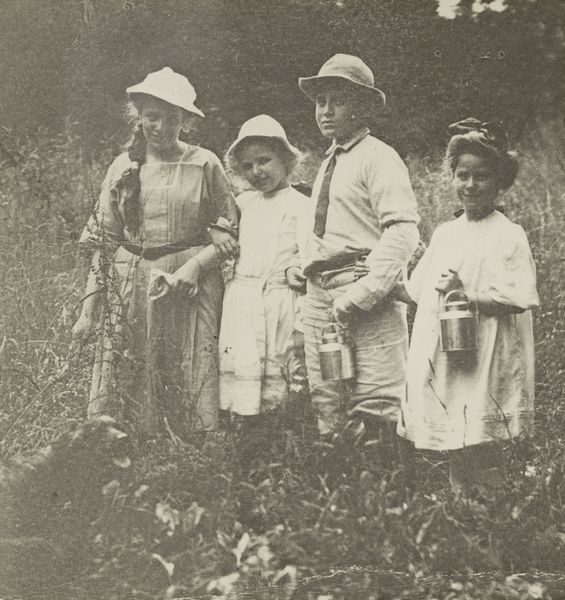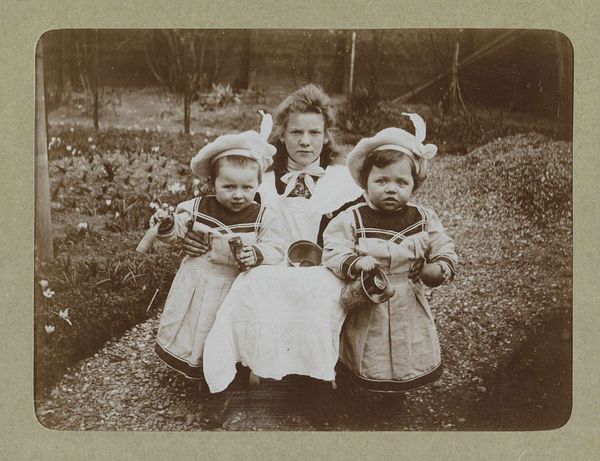
Waldemar Titzenthaler, de fotograaf, met zijn echtgenote Olga en kinderen Marba en Eckart in een veld Possibly 1917 - 1918
0:00
0:00
photography
#
portrait
#
landscape
#
german-expressionism
#
photography
#
genre-painting
#
realism
Dimensions: height 76 mm, width 111 mm, height 159 mm, width 175 mm
Copyright: Rijks Museum: Open Domain
Editor: Here we have Waldemar Titzenthaler’s photograph, “Waldemar Titzenthaler, de fotograaf, met zijn echtgenote Olga en kinderen Marba en Eckart in een veld,” made probably between 1917 and 1918. It’s a tender scene of a family in a field, rendered in monochrome. There’s something so classically composed about this. What catches your eye about this piece? Curator: What I find compelling is the way this image reflects both a desire for normalcy and a subtle commentary on social roles during a tumultuous period. The German Expressionist movement, though diverse, was grappling with anxieties surrounding industrialization, urbanization and, of course, war. While seemingly a simple family portrait, the intentional staging and somewhat rigid postures speak to the constructed nature of familial identity and the photographer’s desire to project an image of stability amid chaos. Editor: I see what you mean. There is a formality to it. But isn’t this just a common way to pose for photos then? Curator: True, portraiture of the time often involved stiff poses. But consider the *choice* to create this tableau during or shortly after the First World War. The act of meticulously presenting an ideal family unit becomes, in a way, a political act. It’s a deliberate contrast to the anxieties and disruptions permeating society. The location in the field, almost idyllic, heightens this sense of constructed serenity. Editor: So, you're suggesting the image engages in a kind of social commentary through its very composition? Curator: Exactly. It subtly critiques the idealized vision of domesticity that’s often presented in times of crisis, forcing us to ask questions about whose reality is being represented, and what societal pressures are at play. Editor: That's fascinating, I hadn't considered that tension. Thanks! Curator: It's images like these that remind us how even the seemingly simple genre scenes are laden with historical context and power dynamics.
Comments
No comments
Be the first to comment and join the conversation on the ultimate creative platform.
